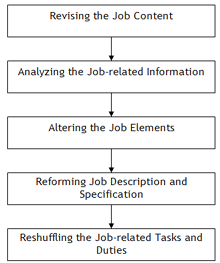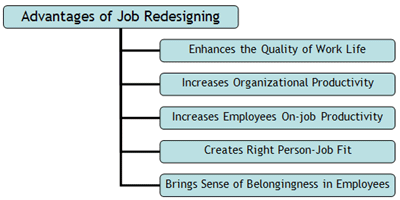Benefits of Job Rotation
February 12, 2025
 Employment Counselling and Career Development
Employment Counselling and Career Development
Many firms across the globe have realized the necessity of employment counselling. One of the reasons is to create a quality workforce along with desired skills and competencies in order to utilize them to maximum possible extent. In today’s highly turbulent and ever-changing environment, keeping a pace with the latest developments and surviving the cut […]
 Key Components of Strategic Human Capital Plan
Key Components of Strategic Human Capital Plan
Employees – their knowledge, experience, skills, innovative ideas, concepts are all valued possessions within an organization. An organization must understand its employees well to expect the best from them. Human capital management refers to developing strategies to hire, manage, train, develop and retain top performing employees. Human Capital management includes the following: Recruiting the best […]
 Principles of Talent Management
Principles of Talent Management
There are no hard and fast rules for succeeding in execution of management practices, if you ask me. What may work wonders for one organization may ruin another one! For convenience sake however there are certain principles of Talent Management that one should follow or keep in mind. Principle 1 – Avoid Mismatch Costs In […]
 Role of Motivation in Employee Retention
Role of Motivation in Employee Retention
Employee retention involves various steps taken to retain an employee who wishes to move on. An employee must find his job challenging and as per his interest to excel at work and stay with the organization for a longer period of time. The management plays an important role in retaining the talented employees who are […]
 Phases in a Group Discussion: Introduction, Central Group Discussion and Summarization
Phases in a Group Discussion: Introduction, Central Group Discussion and Summarization
To work in any organization, it is essential to work in a team because no organization can run with a single man. They mostly require workforce and people who can work well in a group and produce results. To evaluate these things, many organizations do conduct group discussion before a personal interview. Though there is […]
Restructuring the elements including tasks, duties and responsibilities of a specific job in order to make it more encouraging and inspiring for the employees or workers is known as job redesigning.
The process includes revising, analyzing, altering, reforming and reshuffling the job-related content and dimensions to increase the variety of assignments and functions to motivate employees and make them feel as an important asset of the organization.
The main objective of conducting job redesigning is to place the right person at the right job and get the maximum output while increasing their level of satisfaction.


Therefore, the purpose of job redesigning is to identify the task significance and skill variety available in the organization and reallocating the job-related tasks and responsibilities according to the specific skills possessed by an employee.
Your email address will not be published. Required fields are marked *